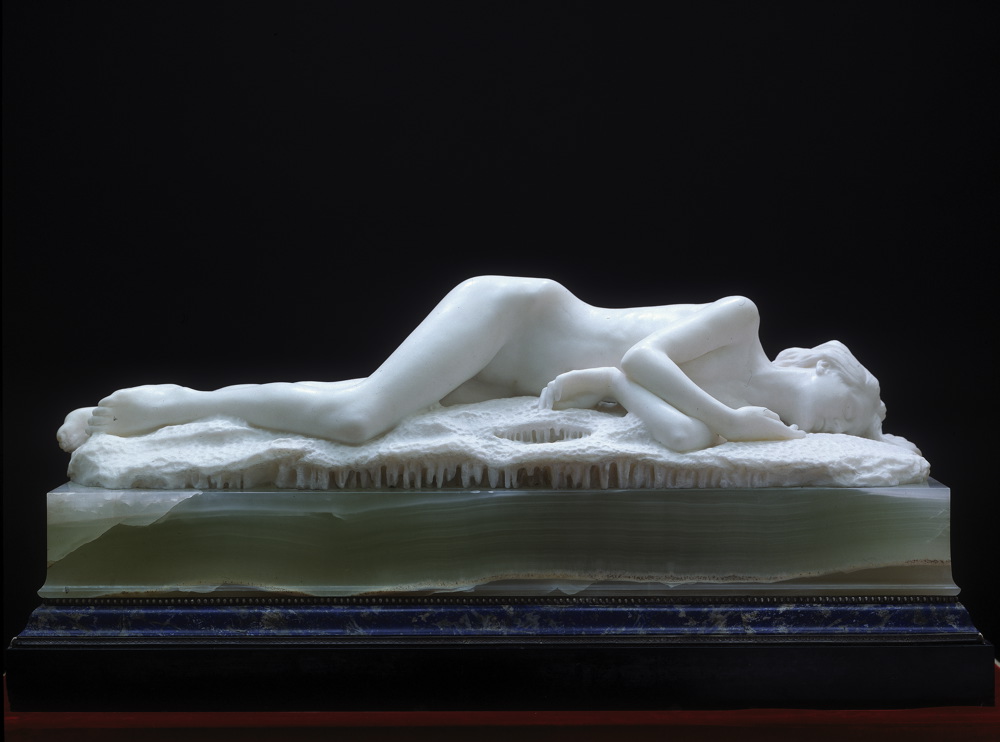Preview: Elizabeth Price exhibition
Bradford-born Turner Prize winner Elizabeth Price talks to Deborah Mulhearn about applying her artistic themes and processes to curate others’ work in a new exhibition
With her mesmerising if disturbing installation The Woolworths Choir of 1979, Elizabeth Price fused images of gothic architecture, 1960s girl groups and the fire at the Manchester branch of Woolworths, when 10 people lost their lives. The video won her the 2012 Turner Prize.
This layering and splicing of material from different genres and periods is the principle behind her exhibition In a Dream You Saw a Way to Survive and You Were Full of Joy, at the Whitworth Art Gallery. The art in this large and complex exhibition, however, is not Price’s own work but her selection of other artists’ work, which she has grouped into four themes: Sleeping, Working, Dancing and Mourning.
As you move around the exhibition, you are moving loosely through the cycle of day and night. Paintings, photography, sculpture, film, installation, pop music, performance and of course video art are drawn from many different time periods and places – as far back as the Etruscans and as far away as the Antarctic.
Sleeping starts with photographs of vagrants and migrants from the late 19th century to contemporary times. The strange formation of sleeping men in London’s Green Park in 1902 and modern-day migrants and rough sleepers folded around the plinths of statues and the bases of trees look almost organic. The next set of photographs show models reclining on chairs, looking beautiful but uncomfortable.
The horizontal lines of the abstract pieces echo the many images of bodies in states of repose. Images of snow, ice and icebergs, glaciers and water suggest metaphorical interpretations as well as literal weather. Fabric looks like natural phenomena.
Sinister and surreal film clips are cleverly projected onto both sides of transparent gauze. The saturated colours of the Lumière Brothers’ 1899 film The Serpentine Dance are arresting in an exhibition otherwise short of colour.
Price’s own work is based on collage. While each piece in this exhibition stands alone, the overall effect of her curation is of a huge collage where the individual works refer back and forward to their neighbours, and also resonate with her own themes and processes.
“I try to use familiar images that have stayed in the imagination and memory so people have an agglomeration of ideas and narratives they can tap into,” explains Bradford-born Price. “I’m interested in the social and political landscapes that produced these artworks, but also the emotions they provoke.”
Modern artwork such as Guilio Paolini’s 1968 Nécessaire – a simple stack of white A4 paper – is placed not far from Snowdrift, a marble sculpture of a young, emaciated and perhaps dying girl from 1901 by Edward Onslow Ford. Visually, they are as unlike as they could be, but both are starkly white, pristine and pure, and both are concerned with a moment of stasis between two states.
“I’m interested in horizontal compositions like Snowdrift and how they are used to suggest certain things and exert a certain power,” says Price. “They are caught at the moment of interruption or interval where there is the potential of something to happen, but it’s also a moment of stillness or hiatus. The paper is waiting to be marked or moved in some way, and marble is a very permanent material but one that reminds you of mortality and dissolution. The girl is almost melting away but at the same time made of marble.”
In a Dream You Saw a Way to Survive and You Were Full of Joy runs until 31 October at the Whitworth Art Gallery, Manchester (whitworth.manchester.ac.uk)

Leave a reply
Your email address will not be published.